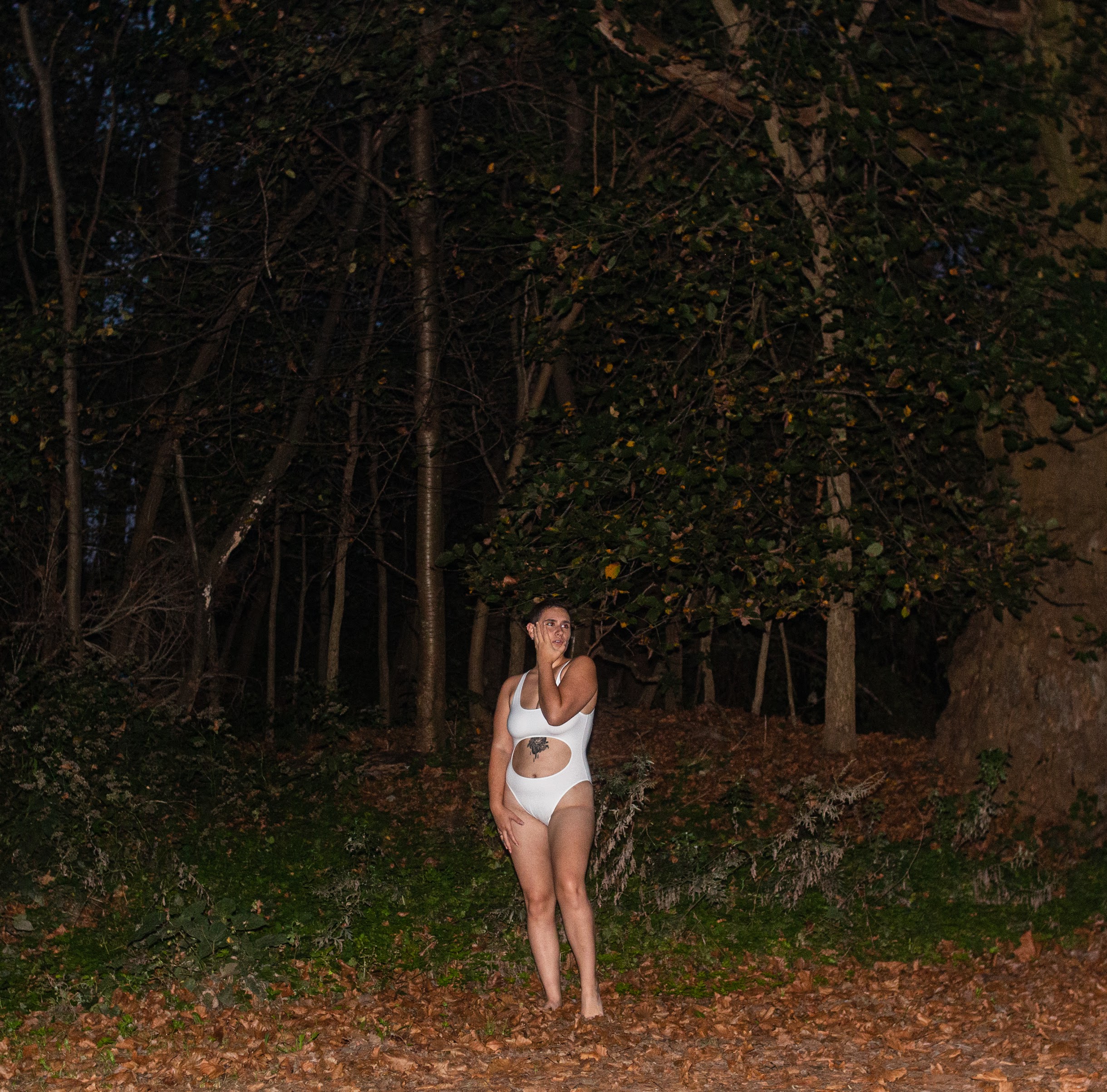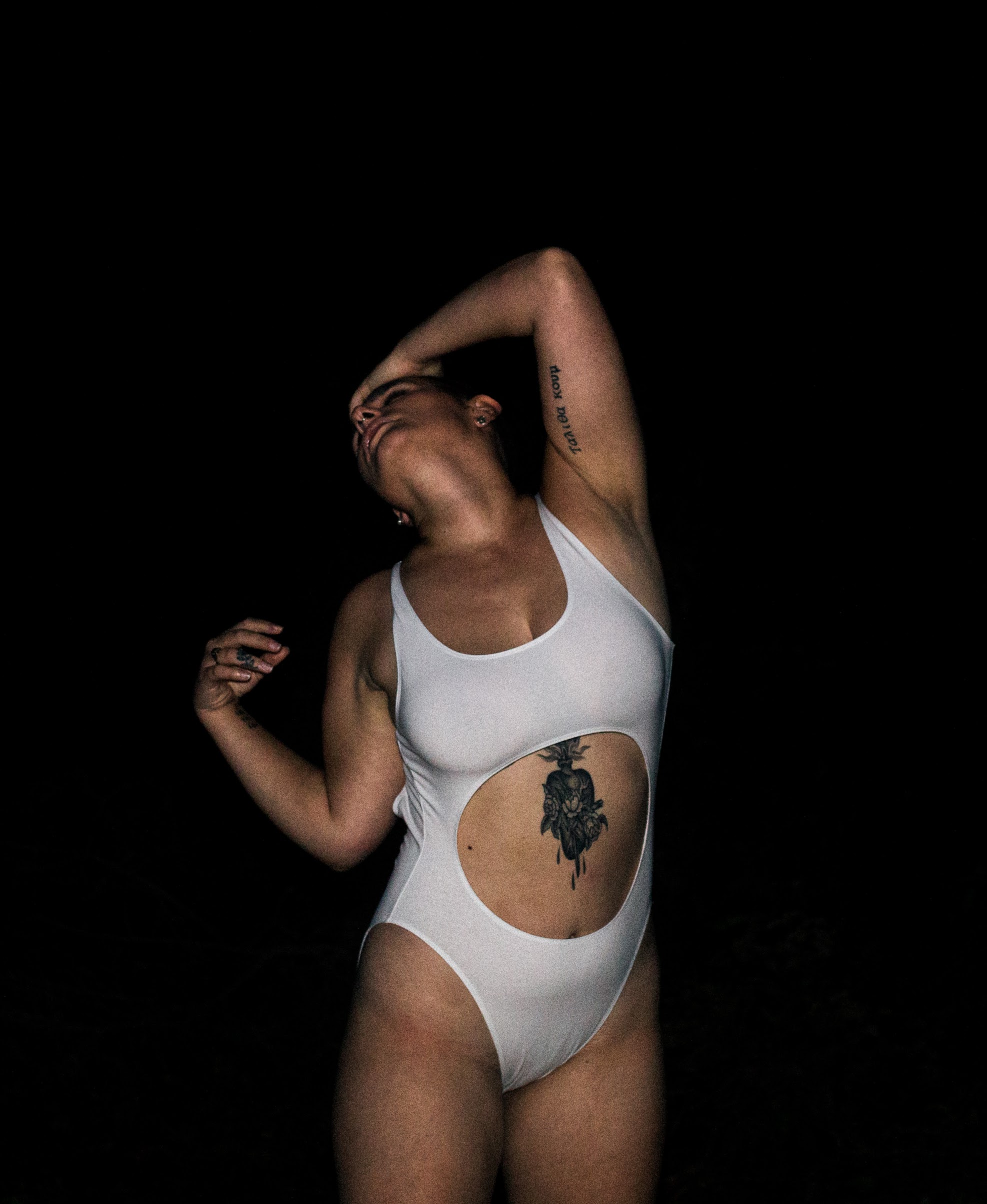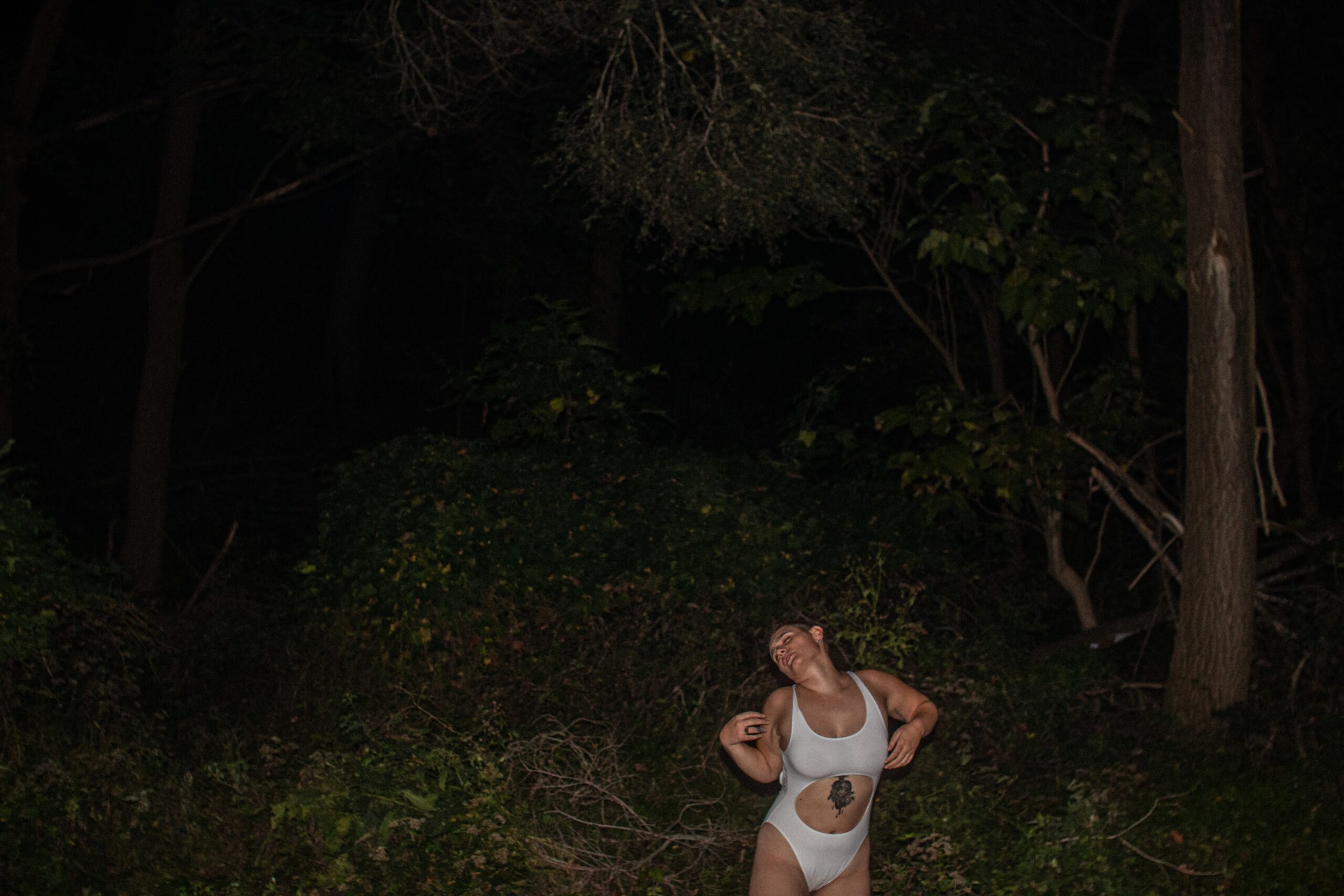Living in the contradictions is second nature to Elizabeth Harris, who performs as fig. A young veteran of Pittsburgh and Cleveland’s DIY scenes, fig stands out as a devotee of art pop, music therapy, queer liberation, and the Roman Catholic faith. At no point does she compromise her values for any given community, and her steadfast commitment to a better future for all oppressed people is just as strong as her commitment to creating a singularly fig sound on her latest full-length, Soft Animal.
In advance of the release of Soft Animal, we had the privilege to call up fig and chat about our favorite fruits, soft animals, and the joy of collaboration. All the while, fig’s admiration for her community shone through, even as she navigated the pitfalls of enjoying the Catholic community she was raised in and the radical queer community that is building the world she wants to see for herself and her friends. Check out our conversation below:

Slumber: For new listeners: what 3 words would you use to describe Soft Animal to someone who wasn’t familiar with you or your oeuvre?
fig: Eclectic since I feel like there are blends of a lot of different genres involved, nuanced since there’s a lot of unique topics I cover, and honest or authentic.
Slumber: I’m struck by the rabbit on the album’s cover – what is the significance of that rabbit?
fig: My graphic designer, Izzy, asked for a symbol that felt true to the album and a rabbit was the first symbol that felt true for the album when we were building this. They’re really chaotic while being soft and sweet. That’s kind of what I feel the album is like. Plus, the rabbit’s foot is a symbol of good fortune and wealth that I’m trying to move forward into. I love that rebirth symbolism. This is true to the music I’ve created but it’s different in terms of production and having a full experience. My past releases have been very stripped down – me and the guitar, me and the piano – so I see this as a rebirth in that the songs are completely different now that there’s a full production. Some songs are seen on past Bandcamp releases, but now that they’re fully produced, they’re so different.
Slumber: You call yourself fig and your lead single for this project is “Pomegranate,” which features a fruit-filled music video. What, if anything, interests you about fruit/fruit motifs?
fig: I love fruit! I grew up in a Mediterranean house (half Greek/half Italian) so my mom has always had bowls of fruit everywhere, pictures of fruit, decor centered around fruit, and it ties into the idea of growth. love the colors of fruit! There’s so much symbolism in that too. Fruitfulness as a broader concept is about producing something joyous and marvelous.
Slumber: Do you have a favorite fruit that you’re partial towards?
fig: Obviously figs, but also raspberries and blueberries. Any berries.

“...you’re so deeply ensconced in these traditions and see these traditions in front of you, even in a different language, you mimic these traditions because of that shared experience. There is something really beautiful about that and it transcends language and human experience. We’re all experiencing this same thing even if we’ve never spoken to each other before.”

Slumber: I’m a queer lapsed Catholic, so I get drawn to art where the artist has a connection of sorts with Catholic accoutrements. How does the Catholic experience shape your practice as a musician, a therapist, and how does it manifest on Soft Animal?
fig: I’ve always been so drawn to Catholic iconography and Catholicism was huge to me growing up. I was a huge youth group kid and I was very engrossed in contemporary Catholic culture. I still relate to a lot of depictions of women and saints in Catholicism. I see myself in a lot of their spectacular stories. I have always valued how Catholicism is such a community space – I loved having that community growing up. We all felt like we had a common goal. Now, I feel a lot that way about the queer community. Growing up Catholic, in youth groups, organizing events, I gathered an appreciation for community.
I use a lot of catholic imagery and language in my songs because it was a core of who I was growing up and a lot of what I’ve learned. Much of that language is still relevant to me and affects me. I started a new song just the other day: “I’ll never let my left hand know what my right hand is doing” which is straight from the Bible. There are so many things from the Bible that are so entrenched in my brain. That will always be a part of me.
Whenever I’ve gone to a new city or country, I loved going to Catholic churches because it felt like I was “home” even when I was so far away from my geographic home. When you’re so deeply ensconced in these traditions and see these traditions in front of you, even in a different language, you mimic these traditions because of that shared experience. There is something really beautiful about that and it transcends language and human experience. We’re all experiencing this same thing even if we’ve never spoken to each other before.
Sometimes it’s really difficult to participate! I don’t go to mass as often as I’d like to, and it’s something to be at mass listening to someone in the pulpit organizing a pro-life rally and I’m like, “NO!!” I’m super pro-choice and pro-abortion-as-healthcare. There’s so much of Catholic culture that I do not align with, but there’s so much about the community, the ritual, the iconography, the feeling of that space that I maintain [a] connection to. As a queer person, I do struggle with that because I have to wonder if I really am welcome here, and in many ways, I both do and don’t. It’s still so true to me that I can’t ignore it.
“Collaboration is key and fun and important. For so long, I was convinced that I needed to do everything myself.”
Slumber: How has your work as a music therapist informed your songwriting or performing life?
fig: It’s so enriching and surprising. There are people I’ve met from so many different places and seeing everyone’s relationship to music has changed my relationship [with] music for a long time. I worked at Cleveland Clinic in behavioral health for two years. And listening to these folks say, “this Imagine Dragons song saved my life” has changed how I view music! You never know what people’s experience with music has been. I know people talk shit about Imagine Dragons, but who knew that they saved someone’s life! These conversations have really changed my perspective. It has made me realize the value of creating how I want to create because someone will appreciate it in some way. There’s so much odd gatekeeping in DIY and in all scenes about what is good and bad music. But in music therapy, it’s not that there’s good or bad music, it’s all about the impact of the music!
Slumber: Is there any particular song on here that has become a favorite in recent weeks?
fig: “Sealegs,” probably. It’s the last song I released. It feels like such a bop and every time I listen I’m impressed that I did this! It’s such a testament to production. Josh Perelman-Hall produced it with me over a million Zoom calls and pandemic-safe mini-meetups to see where this song could go.
Slumber: What color or colors does Soft Animal sound like?
fig: Deep burgundy and hunter green, maybe even some robin’s egg blue.

Slumber: Who is a musician who convinced you that you can make music the way that only you can, and how did they do that?
fig: Fiona Apple. I think the way she uses the keys/piano in her music was so inspiring as a pianist. If people can listen to Fiona Apple, I feel like they can listen to me. Also, Weyes Blood. There are so many! And St. Vincent! Badass music ladies who do whatever the fuck they want. It’s not just a collection of nebulous branding or illustrious concepts, but it’s all connected to how they’ve been feeling!
Slumber: What have you learned about yourself or your creativity by crafting an album?
fig: Collaboration is key and fun and important. For so long, I was convinced that I needed to do everything myself. I was convinced that I needed to be mixing, producing, making all the elements, and I got to a wall and it wasn’t going how I wanted. Opening the project to collaboration has allowed me to grow as a musician, listener, and artist. There’s so much about being a creator that’s tied to listening. I have a new soundscape open to me where I can hear where a guitar part could come in as I’m composing on a piano. If I didn’t start collaborating with Josh, IDK if I’d have gotten there.
Slumber: What do you hope that listeners get out of Soft Animal?
fig: There are many ideas on the album but the overarching theme comes from the Mary Oliver quote: “You only have to let the soft animal of your body love what it loves.” I want people to understand themselves in multitudinous, complex ways, not limited to one narrative. I want people to know that what affects you affects every part of you – your trauma, your heartbreak, etc will impact the relationships centered on those experiences but also the tangential, unrelated relationships, including your relationship with yourself. It’s all interconnected, so we need to grapple with the emotions of traumas and hurts from each facet of our existences.
Listen to Soft Animal, out now, here:


